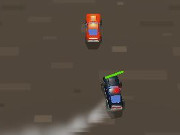
Turbo Canyon Html5 Game - Play Free Fun Off-Road Games Online
Get ready to conquer the rocky canyons in Turbo Canyon, a thrilling free online game that's packed with adrenaline and excitement! Hop into your powerful new blue monster truck, equipped with all-terrain tires and extreme suspension, and take on treacherous landscapes filled with obstacles at every turn. With turbo speed and rough terrain, maintaining balance will be your toughest challenge. Can you power through each level without losing control? With stunning HTML5 design and heart-racing action, this game is a must-play for thrill-seekers. Ready to tackle the canyon? Let's go! Have fun!
10,499 play times
How to Play Turbo Canyon Game
Use your arrow keys to play this free online game. The spacebar is used for restarting each level. Use the up arrow to accelerate and the left and right key for balance.
What is a Turbo
When you hear the word Turbo, you might think of the 2013 animated movie about a snail, starring Samuel L. Jackson, and Ryan Reynolds. In the automotive world, the term turbo is used to describe something else. According to WikiPedia a turbo is a turbine-driven forced induction device that increases an internal combustion engine's efficiency and power output by forcing extra air into the combustion chamber. It is often also referred to as a turbocharger. This improvement over a naturally aspirated engine's power output is due to the fact that the compressor can force more air. Turbochargers are commonly used on truck, car, train, aircraft, and construction equipment engines. Forced induction or turbo dates from the late 19th century, when Gottlieb Daimler patented the technique of using a gear-driven pump to force air into an internal combustion engine in 1885.
What is a Canyon
According to WikiPedia, which has the answer for everything, a canyon is a deep ravine between pairs of escarpments or cliffs and is the most often carved landscape by the erosive activity of a river over geologic timescales. A canyon may also refer to a rift between two mountain peaks, such as those in ranges including the Rocky Mountains, the Alps, the Himalayas or the Andes. Usually a river or stream and erosion carve out such splits between mountains. Most canyons were formed by a process of long-time erosion from a plateau or table-land level. Canyons are much more common in arid than in wet areas because physical weathering has a more localized effect in arid zones. The wind and water from the river combine to erode and cut away less resistant materials such as shales. The freezing and expansion of water also serves to help form canyons. Water seeps into cracks between the rocks and freezes, pushing the rocks apart and eventually causing large chunks to break off the canyon walls, in a process known as frost wedging. Canyon walls are often formed of resistant sandstones or granite.







